SEVEN TRUMPETS
|
FIRST TRUMPET –
the Serpent vomiting out his intestine coils upon earth |
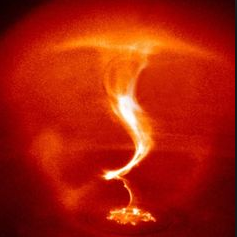
from: pinterest
|


|
SECOND TRUMPET – pillar coming down
|
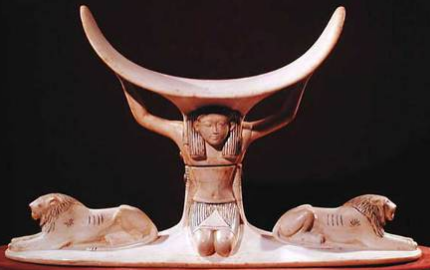
heraklion.blogspot
|
8] kai G2532 AND o ho G3588 THE deuteros G1208 second aggelos G32 MESSENGER esalpisen G4537 TRUMPETS kai G2532 AND hOs G5613 AS as-it-were oros G3735 mountain mega G3173 GREAT huge And
puri G4442 to-FIRE kaiomenon G2545 BURNING eblEthE G906 WAS-CAST eis G1519 INTO tEn G3588 THE thalassan G2281 SEA kai G2532 AND egeneto G1096 BECAME to G3588 THE triton G5154 third tEs G3588 OF-THE thalassEs G2281 SEA haima G129 BLOOD
9] kai G2532 AND apethanen G599 FROM-DIED died to G3588 THE triton G5154 third tOn G3588 OF-THE ktismatOn G2938 CREATURES tOn G3588 OF-THE the en G1722 IN tE G3588 THE thalassE G2281 SEA ta G3588 THE the echonta G2192 ones-HAVING having psuchas G5590 souls kai G2532 AND to G3588 THE triton G5154 third tOn G3588 OF-THE ploiOn G4143 FLOATers ships diephtharE G1311 WAS-THRU-CORRUPTed decayed
8) And the second angel sounded, and as it were a great mountain burning with fire was cast into the sea: and the third part of the sea became blood;
9) And the third part of the creatures which were in the sea, and had life, died; and the third part of the ships were destroyed.
|
mountain:
|
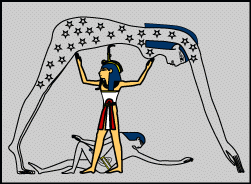 |
as another description for the pillar – compare above picture with the balance, at top;
in the picture you see the deity SHU holding up the dome of the ãnkh-torus, NUT; while the earth-god GEB is on his back in the south [the original place of earth, see note at previous trumpet];
Technically speaking, this mountain should be the glyph QA, “high exalted place”,”high mountain”, and QAU, “the high place on which the god of creation stood” [BD1].
In scripture, a mountain is a designation of “the seat of power of a realm”, which may relate either to eden [Zion, Sinai] or to the pantheon – as in Mat.4 “..and the devil took Him up onto an exceeding high mountain” — which is the mountain adressed in this paragraph, as the seat of their rule in the North.
Strong’s considers the word Oros from an obsolete root oro-, “to rise, to rear”; the PIE may be from *er1-, “to move, to set in motion, to be, to exist”, but also related to (781) *õr-, “to speak, to talk, orate”, or even “organ to speak; mouth” [*5]; a cognate being Orient, “the East”;
while many roots aplly to this mountain [it is in the eastern sky; it’s summit is the mouth, etc], we initially got confused from the name Orion – likely a derivation of the same root. Perhaps the correlation may be, that the Gizah shafts show that Orion is the second anchor for the North; insofar that would make sense, that Orion in glyphs is SAH’, and it’s stepdown is SHU, the nature of the pillar – but this part still needs be examined; as also whether Oros is a proper link to Ouranos [stolen eden’s realm, as mixture];
|
“burning/fire”:
|
…..we had this concept in the Seals – read here: aether on fire;
|
the sea:
|
 |
…..several terms in Greek are used for sea; oceanus, pontos, thalassa –
here, G2281, Thalassa [*6] or Thalatta is the mixed-realm; because she supports as well “creatures with a soul” as “artificial creations” [see below];
Strangely, the root of the word relates to the aspect of the mountain, just before: the IE root *tel-, *tlé-, *tlã-, “to bear, to carry up, weigh, to lift up” gives cognates as tálassai, “to take upon oneself”, ‘to bear”; talánton “weight”, “support”, “scale-pan”, “talent”; talásia, “weighing”, téllö, “to get up”, Átlas [Shu], “that supports” where the Á is copulative; tylós, “knot”; and Sanskrit tul and tulã with similar meanings,
then the author makes a curious note, yet belonging to that same cluster: satyr, tyrós, “cheese”, tyreuö, ‘to make cheese”, stating that the L to R change is commonly accepted; adding “moved with force – the reference is to the result of the work performed on milk to obtain cheese, that is “hardened milk”, end quote [p.530,see *5];
– which resembles too much the concept of the Vedic “churning the milky ocean” to can ignore in this context, see picture above – where the solarplane coil rotates the mountain/pillar, with Vishnu/Anubis on top as the House of the horizon;
…the glyph MÃH, with hebrew-H, has several meanings of “milk”, and preceeds immediately before it’s stepdown MÃKH:
|
again the same theme of a large balance:
the line “balance of the earth” literally reads: the earth/which is/on a pair of scales etc.; – right above that, “salesman”, reads: the pair of scales etc/becomes the Doorkeeper; the cluster MÃKH as root of MÃKHENT-boat [add BD*], ferrying over all aspects to the house of the horizon |
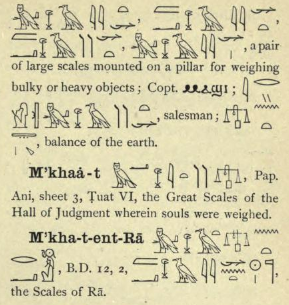 |
….what the text depicts, is like the toppling-over of an enormous pillar of a balance, crashing down upon
its own scales!
“and a third of the creatures having a soul, died “…”and a third of ships became corrupted”:
…..the same syntax as at the first trumpet: the text adresses two different events —
the creatures having a soul, can only relate to Earth, and then apparently to animal life, mammals;
yet the second part deliberately witholds a cognate for the term “souls”, just using “ships” instead of another word for creature, and instead of “died” uses the word “decayed”, almost juxtaposing both events;
ships: G4126, pleõ, from PIE *pleu-, “to flee, fly, run, swim”, with examples as ship, πλοῖον; to swim, to float πλώω; wealth, riches πλοῦτος; Pluto, god of the underworld, Πλούτων;
the greek title of Pluto is “the lord of riches”, and he received “a third portion of the underworld” [*9], strangely coinciding with the theme of this text. Pluto should be representing the apes of the solarplane, who desired to have a head — perhaps the allusion why he had “a helmet which made the wearer invisible”, etc.
The expression “ships” is typically used in the spells as “boat”, UÁA, when describing “an artificial construct”; see relation with swimmers in Tuat XI, as “an immerging in a dimensional bath”, baptism, to gold, NUB.
diaptheirõ, G1311, “corrupt, perish”, a combination of Pthio, “to waste away”, and Dia, “the legal ground of an act, account, ground, reason”: together ” the legal ground / for wasting away”;
also possible may be (790) *pêd- “vessel, vat, container”, also “foot”; (824) *pet-, “to stretch out (esp. the arms)” [greek petánoumi, avestan pathana, ‘wide, broad’] compare glyph PETCH, “spread out”;
|
THIRD TRUMPET – ‘wormwood’: the Vesica north coming down
|
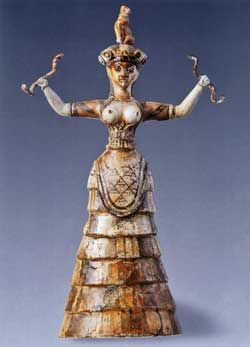 |
[10] kai G2532 AND ho G3588 THE tritos G5154 third aggelos G32 MESSENGER esalpisen G4537 TRUMPETS kai G2532 AND epesen G4098 FALLS ek G1537 OUT tou G3588 OF-THE ouranou G3772 heaven astEr G792 GLEAMer star megas G3173 GREAT larges kaiomenos G2545 BURNING hOs G5613 lampas lampas G2985 SHINEr torch kai G2532AND epesen G4098 FALLS it-falls epi G1909 ON to G3588 THE triton G5154 third tOn G3588 OF-THE potamOn G4215 rivers kai G2532 AND epi G1909 ON tas G3588 THE pEgas G4077 SPRINGS hudatOn G5204 waters 11] kai G2532 AND to G3588 THE onoma G3686 NAME tou G3588 OF-THE asteros G792 GLEAMer star G3004 IS-beING-said apsinthos G894 UN-DRINK kai G2532 AND ginetai G1096 IS-BECOMING to G3588 THE triton G5154 third tOn G3588 OF-THE hudatOn G5204 waters eis G1519 INTO apsinthon G894 UN-DRINK absinth kai G2532 AND polloi G4183 MANY anthrOpOn G444 humans apethanon G599 FROM-DIED died ek G1537 OUT tOn G3588 OF-THE hudatOn G5204 watershoti G3754 that seeing-that epikranthEsan G4087 THEY-WERE-made-BITTER]
10)And the third angel sounded, and there fell a great star from heaven, burning as it were a lamp, and it fell upon the third part of the rivers, and upon the fountains of waters; [see amtuat XII “star falling down called Absinth”]
11) And the name of the star is called Wormwood: and the third part of the waters became wormwood; and many men died of the waters, because they were made bitter.
….the official explanation is “some bitter kind of plant”; others have tried to connect it with the strike of a comet, or the fallout of the nuclear accident in Tchernobyl in the ’80s;
after a lot of searching we found sound possibilities as “ap, water and anthos, flower” (yet lacking the S), and though that suggestion was related to this same mysterious bitter plant, we considered the interpretation could be “flower of life” instead. But it was not satisfying, and the nature remained unclear; in spite of trying PIE roots of every sort;
|
the greek letter PSI, and it’s depiction of the vesica North:
|
 |
….so in the umpth attempt, we wondered what the psi is doing in the word;
obviously placed there for a reason – and because “names” are most crucial, as well in scripture as in spells – since “the name” of a being depict its nature and power – we tried to find the origins of PSI, with as possible clue that it is a composite consonant: [p] + [s], which is the Red Flag here;
– the earliest finds Greek type writing were found in the Fayyum, the oasis in ancient Egypt belonging to the crocodile Sebek; it is now dubbed the Würzburg-fayyum tablets (the city in Germany); and this early script from 9-8 BC did not yet contain the psi – nor the TH and U; eventhough they wére familiar with the imported semitic [k]+[s], our X [*7].
The greeks needed more syllables for their tones as the semitic alphabet could offer (22), and hence went ‘shopping’ in the Aegean cultures. Before the psi became incorporated in the Greek, it was a symbol of the very picture next to the header, above:
“…[figurines, resembling the greek letter] ‘psi’ have been found in tombs, houses and sanctuaries, and their purpose has been much debated (Higgins,French). now their style seems to have been a mainland contribution, but the distinctive gesture of their upraised arms, particularly in the case of the “tau” and “psi” figures, was inspired by representations of the Minoan goddess (Nicholls) […] and we find their descendants in archaic Greece, especially in Boetia and Corinth (Mollard).” [*9, great read]
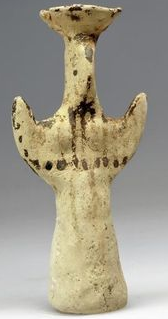
from: pinterest
|
Greek Mycenaean PSI type terracotta female, 1300-230 B.C. with upraised arms and dark brown decorations; it shows that the Minoan civilization was much more advanced, but the very same idea is depicted here. Please note the consistent raising of the arms, as we saw by SHU, in previous trumpet, as expression of the Ka-double glyph; |
| Isis, ruling the vesica north:…though the minoans etc. may have depicted her holding two snakes, therewith representing the whole vesica, technically, the sigil of ÁST, Isis, is the throne, is about ruling the throne of the adamite soul. She is therefore typically assigned to fallen adamite males – beHexing them with false ideas – since it is Vital for Them, to not have male discover his original rule! | 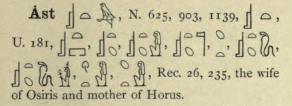 |
“The snake goddess’s Minoan name may be related with A-sa-sa-ra, a possible interpretation of inscriptions found in Linear A texts. Although Linear A is not yet deciphered, Palmer relates tentatively the inscription a-sa-sa-ra-me which seems to have accompanied goddesses, with the Hittite išhaššara, which means ‘mistress’….
Both goddesses have a knot with a projecting looped cord between their breasts. Evans noticed that these are analogous to the sacral knot, his name for a knot with a loop of fabric above and sometimes fringed ends hanging down below. Numerous such symbols in ivory, faience, painted in frescoes or engraved in seals sometimes combined with the symbol of the double-edged axe or labrys which was the most important Minoan religious symbol.” [*9]
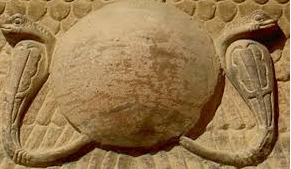
from: pinterest
|
……the knot is Isis’ knot, glyph ÁST TET, where the root in the above name should be ÁS, as well — there are many derivations of the same theme, such as Asherah in scripture, who had people worship ‘her’ poles, read: worship the pillar; the serpents she holds are the same theme as the egyptian house of the horizon with double uraei [right] |
|
the double axe upon the pillar:
|
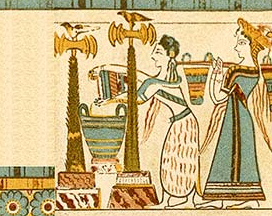
from: apricityforum
|

sacredtexts.com
|
minoan libation scene painted at a sarcophagus; the double-axes are upon pillars [!] to the left, and on their summit a (horus) bird; – note how the themes are extremely concruent, eventhough surpassing peoples and timelines; |
the axe named SET’FIT, in Amtuat X, depicts exact the same: the creating of the double-rule in the North, above earth; as the double house of the horizon.
– the same Axe is in the story of Zeus (Horus), where the deity Metis, representing cunningness, rose up from his belly, and birthed Athena from Zeus’ head [Isis, ruling the adamite throne], Zeus’ head was cleaved with an AXE by hephastios, clearly denoting the double “house of the horizon in the North” [*10]
|
Minoan labrys – double axe, Archeological museum
|

credit: mlahanas
|
| – ancient archetypes are embedded deep into man’s mind; but today many think that “we are now modern peoples, and don’t believe in that ancient nonsense anymore”, shrugging it Off, while preparing themselves to go out and watch the newest movie in town. | 
photobucket
|
|
‘wormwood’ = Isis + Saturn:
|
 |
plus either PIE (58) *ant-s-, “brow, front, anterior” and “forehead”, and the root ἄντα “opposite” and “against, facing”; or the root “to flower, to blossom”, and derivative ἄνθος “flower, blossom” and it’s derivations; poikilos, pikros, from PIE (794); *peig- and *peik-, “coloured, speckled”, as the many serpents in Amtuat;
– in the spells, the other term used for the house of the horizon, the vesica, is “anunna-face”, the glyph H’ER, the same as H’ERU, Horus: the PIE 58 would match this aspect well;
a second theme here is the H’, Saturn – as far we gathered, Saturn is involved in sustaining the present vesica, by “having a hold, a claw upon it”, perhaps one could imagine a plasma-stream fróm Saturn entering the magnetic North of earth. Since H’ER is “the speech / of Saturn”, and Hathor/Saturn’s musical istrument is the sistrum, this “claw” may relate to “sounds”, emanating from saturn [please search for videos with this theme].
The close connection between the Minoan bull and double axe could very well depict the horns of the bull as this “claw”: and indeed there are glyphs in the saturn-cluster ‘horns’ – H’ENNU.
Even the post-eden white giant bloodlines in Catal Höyuk worshipped the same bull horns [see *8, and note at end of page]
|
bitter:
poikilos, pikros, from PIE (794) *peig- and *peik-, “coloured, speckled”, as the many serpents in Amtuat; in the picture of hour V you see two of them in the lower register [see elsewhere on this site]; please note the double house of the horizon in the North, here no ureae but two horus-falcons; |

taken from: andrewcollins
|
….we struggled for a way to express this important theme,
and thought to add a video, for you to have a Visual about this whole topic;
of the relation between the vesica north, speaking creation to both earth and the Sekht-fields,
and how the [imprisoned] adamite side of the vesica sustains the nourishing aspects of eden’s realm,
RPTnet using the video for information purpose only
– please do realize, that though the concept is true enough, the spoken words in the video are still said within present earth’s Dualism, since in this case the water forms after a human intent. However, when the imprisoned adamite throne will be freed, their crystalline will form the nourishing aspect of water into “dead water”, or as the text describes, “bitter”
water, springs and rivers:
….again a different set of words;
in the cluster of Greek “hydor”, water, ὑδατ-, ὑδρ- and ὕδωρ; uoron, “urine” [several]; water-snake ὕδρος; Hydra [serpent] ὕδρα; going back to IE au̯(e)-, au̯ed-, au̯er “wet, flow, sprinkle, water” etc.;
The context must be here the nourishing aspect of the captured Eden realm [as in Ouranus];
because of the link to “urine” and the Hydra – a word appearing in the spells is USH, “urine”, being “the word / from the soulpool-SH”, south; denoting a product of Eden, but not yet good enough for them to can use;
– the direct link is to the Hydra, the adamite originals imprisoned in the south:
| “This monster, like the lion, was the offspring of Typhon and Echidna, and was brought up by Hera. It ravaged the country of Lernae near Argos, and dwelt in a swamp near the well of Amymone: it was formidable by its nine heads, the middle of which was immortal. Heracles, with burning arrows, hunted up the monster, and with his club or a sickle he cut off its heads; but in the place of the head he cut off, two new ones grew forth each time” [*11] | 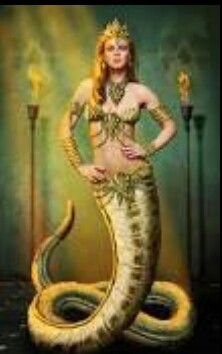
pinterest
|
…the huge serpent Typhon is Adam; his spouse [!], the serpent with beautiful face, being Eve;
and therefore it is obvious that the Hydra are the originals, evenmore so since Hercules [Osiris] attacked them, “by cutting of heads”: that is exact the theme in the spells, calling this hydra the NÃU- or HÁU serpent, with hebrew-H; depicted as the cat Rã cutting off the head every day in the south.
We lack space for this theme now; we just tried to present the colour of the used word “water”;
greek potamon, with possible root (839) 2. pō(i)-: pī-, and (from pō-), “to drink”; but also pō(i)-: pəi-?: pī- ‘to graze, pasture’,”to tend flock, be a shepherd” ποιμαίνω; or the flock itself, ποίμην;
used word is Pega,
[related to!] the root PEG from PIE (794) *peig- and *peik-, “coloured, speckled”, [see ‘bitter’?],
or from peuk̑-, and peug̑- ‘to pink, stab, stick’: semantic field: “to cut, to press, knife (tool)“, Greek: “fist, boxing(match)“,πυγμή; the words in the English cluster are “to attack, to assaul, to stab, to puncture, dwarfish” perhaps even literally “to peg (a tent)“; Strong’s uses Pêg^, “spring, fountain, source of supply (not necessarily the original spring)“;
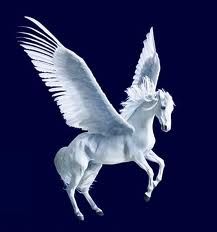
pinterest
|
Pegasos’ name means either “of the spring”, from the Greek word pêgê, or “sprung forth” from the word pêgazô; he was believed to have made his appearance near the sources (pêgai) of Oceanus.[*12] |
….. so we have “a star, falling upon a third of the rivers which nourish the physical-adamite-aspects of people upon earth”, “and the star falling as well upon a third of the wells in the Sekhet-fields, living fróm the nourishing water of eden”; then the text only addresses the people upon earth: “and the vesica-flower-of-life made a third of eden’s nourishing water undrinkable, and many humans died, because eden’s nourishing water became speckled”
*1] Haoma and Harmaline: The Botanical Identity of the Indo-Iranian Sacred… page 121,
Door David Stophlet Flattery,Martin Schwartz
*2] https://en.wikipedia.org/wiki/Haoma
*3] https://www.etymonline.com/index.php?term=yard
*4] the word usually translated with "and", greek Kai, has a range of meanings, often also casual:
A] like Rev.3, "although here KAI may be rendered "also" (I also will come in, etc.), declaring that, if the first thing (expressed in the protasis) be done, the second (expressed in the apodosis) will be done,also";
B] Kai may even read "after" – when Time-related: " after a designation of Time, Kai annexes what will be or was done at that time";
C] added to words designating the cause, it marks something which follows of necessity from what has been previously stated";
– all quotes from Thayer greek Lexicon;
*5] comparative etymological Dictionary of classical Indo-European languages…page 211
Door Rendich Franco
*6] https://www.theoi.com/Protogenos/Thalassa.html
*7] Greek Writing from Knossos to Homer: A Linguistic Interpretation of the…p.156
Door Roger D. Woodard
*8] The Origins of Greek Religion, p.111,114,150,etc
Door Bernard C. Dietrich
*9] https://en.wikipedia.org/wiki/Minoan_snake_goddess_figurines
*10] The Esoteric Codex: Deities of Knowledge, page 154
Door Harold Burham
*11] https://www.theoi.com/Ther/DrakonHydra.html
*12] https://www.theoi.com/Ther/HipposPegasos.html


